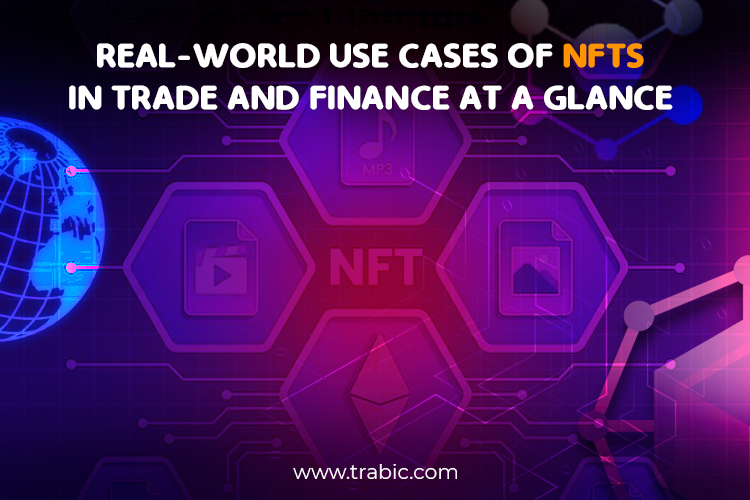A non-fungible token (NFT) is a data unit associated with an individual digital file. These files can be anything but are more commonly works of art, music, or recordings of live performances. In response to the tremendous expansion, individuals and businesses are beginning to vigorously explore ways to make the most of the world of NFTs. To interact effectively with each other and have many options, buyers and sellers should consider third parties in terms of cost, access to a broader customer portfolio, and additional services. It finds partnerships with platforms more feasible. Marketing, Legal, and Technical Assistance, etc.
These platforms utilize blockchain technology to affirm the origin of digital content and assure that existing assets are not duplicates. Overall, the NFT marketplace is divided into streamlined and enhanced platforms. The streamlined marketplace supports a wide range of NFTs, operates both auctions and fixed-price sales, and allows transactions via credit cards and crypto payments in Ethereum, Bitcoin, and select other tokens. Augmented markets, in turn, concentrate on a more defined niche, delivering multiple complementary services such as foundry (creating the NFT itself), supervision, marketing, and pricing proposals.
All around us, from the art world to extensive corporations to the merchandise of big names, NFT technology is poised to transform the essence of digital ownership permanently. However, behind the hype of possessing digital items lies a much more noteworthy and critical circumstance. NFT is about to transform trade finance and global commerce completely. It has the prospect of tokenizing a broad range of assets and connecting real-world financial origination to decentralized finance (DeFi) markets.
Trade finance instruments such as fixed-income instruments and investment notes can safely move along the blockchain in a way that brings transparency, facilitates seamless settlement, and expands liquidity. Simultaneously, smart contracts eradicate intermediaries, diminish counterparty risk, and maintain the virtue of deliverables. We are talking about a new class of financial assets and a substantial overhaul of almost every financial service, payment system, and supply chain worldwide.
How can Fintech agencies use these NFTs?
NFTs are already making a significant impact in the crypto space. Within the context of finance, NFTs, with their vast potential for transformation and convergence, could merge with other blockchain applications to form an entirely new financial infrastructure. The foremost thing that comes to mind concerning NFTs is their interconnection with decentralized finance (DeFi).
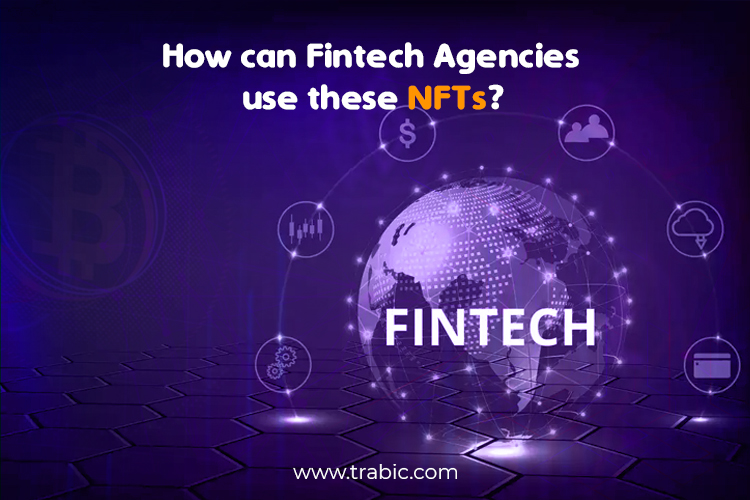
DeFi is a rapidly growing financial system based on blockchain technology designed to remove banks’ and institutions’ control over money, financial instruments, and financial services. Initially, NFTs and DeFi started as separate applications, but over time it became clear that NFTs could be a good vehicle for DeFi. Despite some challenges to overcome and some aspects to streamline, many experts have already defined how fintech players can use tokens to their advantage.
NFT as collateral
One of the most exciting ideas is using NFTs as collateral to earn interest or obtain loans. This means anyone can provide his NFT representing a work of art, digital land, or tokenized real estate as collateral and borrow money against it. Besides being used as collateral, NFTs can also represent more complex financial instruments such as insurance, bonds, and options. For example, each insurance policy can be represented as an NFT, which can be traded on the secondary market.
Shared ownership
Another important aspect regarding the use of NFT-DeFi combinations is the concept of fractional ownership. NFTs also gives you the flexibility to create NFT shares. As a result, investors have the opportunity to own an NFT without having to purchase the entire unit. However, while potentially victorious, his application of partial ownership of NFTs in the DeFi space is still emerging.
New Customers, Revenue Streams, Partnerships
The easiest and most obvious way to use NFTs in favor of a financial institution is to participate in sales or start lottery competitions where new customers can win their NFTs. Apart from this, NFTs can also be used to generate liquidity. Many financial startups are launching projects to provide new services based on NFT trading. And finally, the NFT boom will encourage the participation of more traditional market players, resulting in a wide range of profitable partnerships and new solutions that will hit the industry.
Is it worth investing in NFTs, and what are the risks involved?
Even though any investment is risky in that one must take multiple factors into account, the thrill of wealth and the potential for enormous returns have made early adopters seek new ways to build wealth. It continues to haunt the adapter. Right now, the market is relatively new, and all crucial processes still need streamlining, so the best solution for investors is to be cautious. Investors may put some money into their NFT, but it should be a small part of their portfolio. For this instance, there’s a possibility to make a profit, but there is no visible damage if something goes wrong.
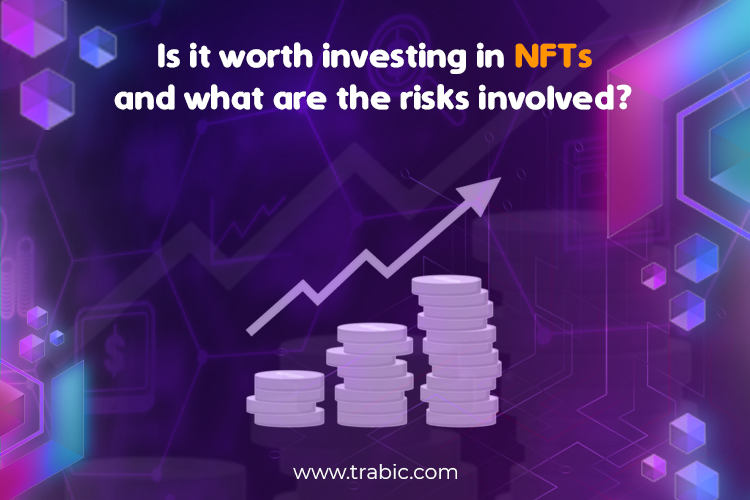
Additionally, where large sums of money are present, the threat of fraud continues. If you lose control of your assets due to hacking, your NFT is no longer yours. Indeed, security risks have always been a pain in an industry closely tied to money. And there is another way fintech wins. Fintech companies with vast resources at their disposal, backed by creative new ideas, have the potential to create highly secure solutions requiring multiple forms of authentication that nearly eliminate all forms of fraud.
How can NFTs involve trade finance?
NFTs represent digital ownership, not just jpegs on the blockchain. They are built on smart contracts and blockchain technology. This is the same decentralized network that powers many popular cryptocurrencies. Blockchain platforms are trustless and highly secure, providing fully verifiable data and an immutable ledger history. Smart contracts, on the other hand, are pre-defined, self-executing contracts that live on the blockchain and define how assets on the blockchain work.
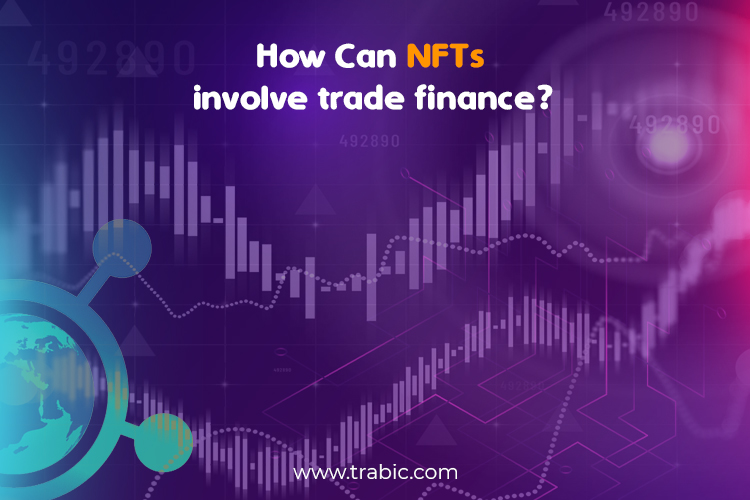
Leveraging this, NFTs can take any information, such as images, 3D models, documents, etc., and give them a form of uniqueness and tangibility by making them cryptographically unique from other data batches.
That indicated that the NFTs symbolize an intrinsically more helpful form of digital information. Data encoded in NFTs cannot be altered, counterfeited, or accessed in any way without the possession of the proper encryption key. Even if an attacker manages to steal her NFT, history and destinations are fully visible to all users.
We also tokenize contractual agreements using Liability NFTs and Asset NFTs created to indicate the ownership of a particular contract between the promiser (the party making the promise) and the promiser (the party receiving the benefit of the contract). For companies and trade finance, this opens up a new world of possibilities for handling sensitive data. More importantly, it provides mechanisms for creating compelling new products, identities, payment rails, supply chain dynamics, and more. For example, NFTs can create blockchain “receipts” to track products from raw material acquisition to landing on retail shelves.
Every step of the process, every hand of goods, and every purchase or sale along the way is immutably recorded. Even better, human intervention is minimal.
Trade finance likewise faces intricate regulative and supply chain techniques, including different moving parts, and requires a lot of trust. It is also a sector susceptible to document fraud. By tokenizing resources, assets, and documents into a solitary, unchangeable digital token NFTs can remove these barriers, eliminate fraud, and reduce reliance on intermediaries. This minimizes the rate of illegal activity in trade finance and means that companies can save overhead costs, wages, and human error. NFTs can do more than this. Redefining and streamlining how businesses operate is an essential first step, but there is much more than NFTs and smart contract platforms can offer the trade finance industry.
For example, NFTs allow startups to create digital representations of their commodities and explore new models of raising capital through frictionless systems. Additionally, the structure and transparency of the blockchain make it relatively easy for any entity to stay within the regulatory framework once it is fully locked down.
NFTs can streamline and validate everything from the debt management process to the provenance of goods. Best aspect of all, it is now attainable possible and happening. Blockchains like the XDC network are currently being tested as trade finance systems. In September, leveraging the XDC network, Tradeteq, a trade finance distribution company, executed one of the world’s first complete end-to-end on-chain tokenized invoice finance transactions.
NFTs could drive DeFi innovation.
NFTs could be central to the future of decentralized finance (DeFi). These fintech projects use cryptocurrencies or blockchains to disrupt existing financial intermediaries. For example, Teller Finance, the algorithmic credit risk protocol developer, began using his collectible NFTs to generate initial liquidity. Holders of these Teller NFTs will also have access to several “immediate APY rewards” and many long-term rewards the company plans to announce soon.
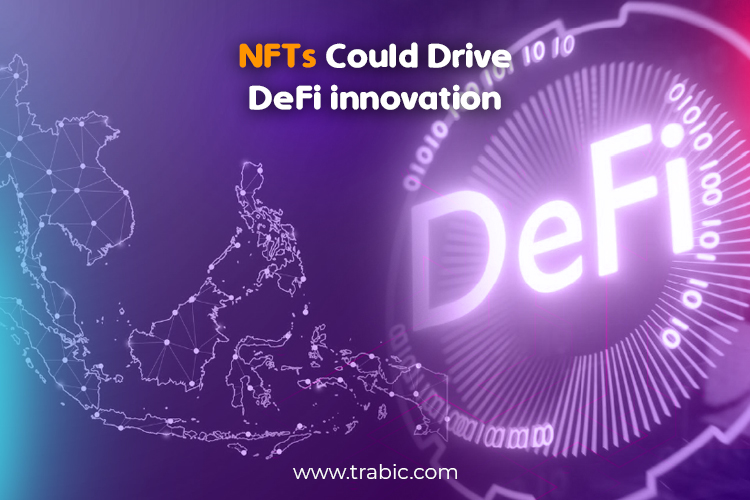
For fintech companies looking to invest in crypto or launch their DeFi service, NFTs may offer an alternative to other crypto funding methods, such as coin IPOs. Other new NFT-related DeFi projects show how fintech will evolve as the crypto space continues to grow and attract new investors. For example, just as blockchain stocks and funds have emerged in response to the rising value of the crypto space, we have also seen the emergence of NFT-related funds. One early example is NFTX, a community-owned protocol for creating and trading NFT index funds.
Disadvantages and risks of NFTs
All NFTs are unique and irreplaceable, and their ownership is stored on the blockchain. Blockchains, by their very nature, are very difficult to edit. New entries can be added, but it is almost impossible to modify old entries. This should mean that ownership is highly traceable and crypto assets like NFTs are even more secure than traditional assets. NFTs have owners, but ownership is not measured by ID or anything like that. Instead, ownership is tied to his two codes. Private and public keys are both associated with an Ethereum “wallet.” If you lose control of this wallet through hacking, your girlfriend’s NFT will no longer be yours.
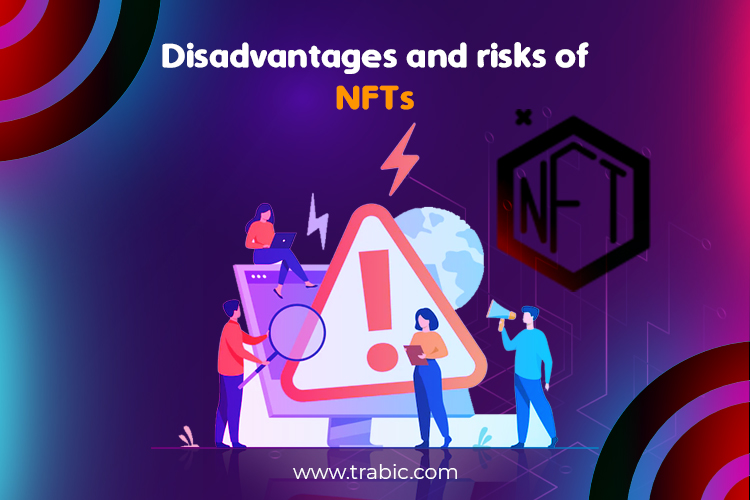
This has already happened. In early March, users of NFT marketplace Nifty Gateway began reporting NFT art theft after an unknown number of accounts were compromised by hackers. One user reported losing up to $10,000 after hackers used his account to buy and sell his NFTs. These security risks are inherent to some extent in how blockchains work. That is why some cryptocurrency investors are turning to highly secure solutions such as hardware and digital wallets that require multiple forms of authentication.
There is also the issue of blockchain energy consumption. By design, blockchain requires significant computations for each new piece of information added, which consumes energy. Estimates vary on how much impact NFTs have, but the cryptocurrency ecosystem, including mining and blockchain verification, has consumed more energy than the country of Argentina. Some of his NFT traders have pledged to invest in “carbon offsets” to reduce the impact of NFT trading. These projects aim to reduce carbon emissions, for example, by planting new trees or protecting the Amazon’s vulnerable rainforest.
It remains to be seen whether these projects will be sufficient to offset the carbon generated by NFT trading. Fortunately, NFTs are likely to consume much less power shortly. NFT is currently running on Ethereum 1.0. Shortly, the company behind Ethereum intends to release and incorporate E2.0. The new blockchain version will use a more energy-efficient proof-of-stake system instead of the current version’s proof-of-work system.
Beginning of a new paradigm
The underlying technology and principles are already there. Still, we are setting the more complex rails for moving these assets and developing new protocols to ensure continued accuracy at every step of the system. It still needs a lot of work to build. As this shift goes global, integration into existing financial firms, regulatory structures, and general education across multiple industries is equally important.
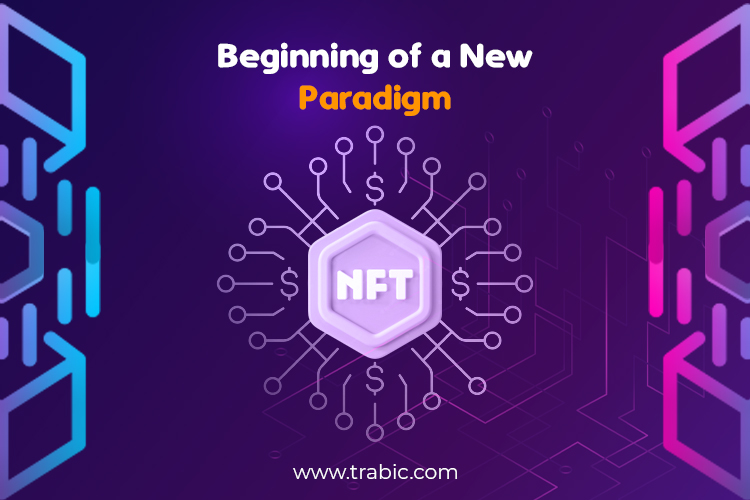
There is already some momentum, as many local and national politicians are also researching the possibilities. Rolling out these new products can be more awkward than it needs to be. In any case, the possibilities they offer are likely to be more widely understood at some point in the future, and a true renaissance in trade finance could occur. It is about more players realizing what’s going on and taking their chances while still early.
NFTs may continue to attract attention shortly. There is already a significant amount of money invested in these tokens, and the market will likely grow significantly in the coming months. The rise of NFTs could have a significant impact on fintech. The combination of NFTs and DeFi is where fintech innovation will be born, at least for the foreseeable future.
For example, new DeFi services are utilizing NFTs to develop liquidity. Numerous DeFi startups and community projects propose unique services on the basis of NFT trading. As more digital assets become NFTs, it will create an entirely new asset class that could change how consumers invest. Concerns about the security and environmental impact of NFTs remain, but these tokens are poised to increase the crypto space’s impact on the financial sector and fintech.
